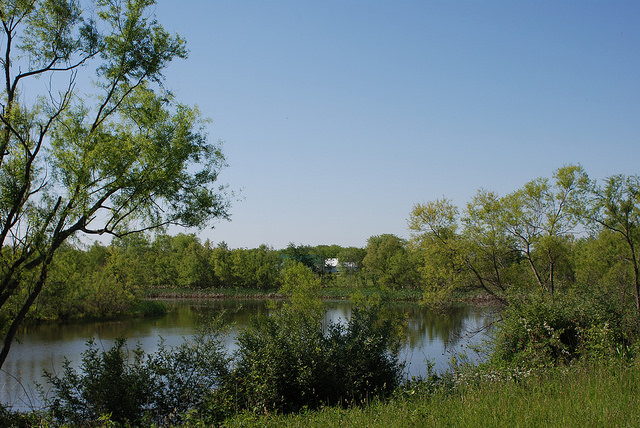
As of May 3, 2017, the US Department of Agriculture’s (USDA) Continuous Conservation Reserve Program (CCRP) will cease enrollment of any new acres – with the exception of State Conservation Reserve Enhancement Program (CREP) enrollments – through the remainder of fiscal year (FY) 2017. While USDA’s Farm Service Agency (FSA), which administers CCRP, will continue to accept offers for continuous enrollment, those offers will not be accepted and enrolled until FY 2018 (FY 2018 begins October 1, 2017).
Prior to May 3, the CCRP took in several hundred thousand new acres. Once all of those have been approved and enrolled, it will bring total acres within the entire Conservation Reserve Program (CRP) – of which CCRP is a sub program – too close to the program’s cap to enroll any additional acres other than State CREP acres.
Through CRP enrollment, farmers can take marginal cropland out of production in return for a cost-share and rental payment on these lands. The land is placed in long-term cover, primarily grasses and trees, to conserve soil, protect water quality, and provide wildlife habitat. The CCRP pays farmers to install partial field conservation practices, primarily conservation buffers to protect soil and water quality or targeted wildlife habitat. Farmers and landowners may enroll such land at any time rather than waiting for specific sign-up periods that apply to the rest of CRP, hence the name “continuous.” CREPs are a subset of CCRP through which states and USDA together pay farmers to address targeted high priority conservation issues identified by local, state, or tribal governments or non-governmental organizations.
The farm bill caps CRP at 24 million acres. Thanks in part to the advocacy and outreach of the National Sustainable Agriculture Coalition (NSAC), which helped to develop the CCRP component are CRP in the 1990s to support farmers in implementing high pay-off conservation practices on environmentally sensitive portions of farm fields, FY 2015 and FY 2016 were record enrollment years for the program. FY 2015’s 872,000-acre enrollment broke records as the largest enrollment since the program’s inception. Interest remained high through FY 2016 when farmers broke the previous year’s record and enrolled 1.3 million acres of sensitive lands in the program.
Unfortunately, the FY 2017 total CCRP enrollment will be well less than half of last year’s record. However, with appropriate management of the program, USDA can ensure that continued demand for enrollment by farmers for the balance of this fiscal year and on into next year can be met in FY 2018 and enrollment can get back on track at FY 2015 and 2016 levels.
At the end of FY 2017 (September 30), contracts will expire on 2.5 million acres of existing CRP lands. Many of those acres will likely be re-enrolled in new contracts, but some will also return to agricultural production and thus once again bring total CRP acreage total below the 24 million acre cap. It is imperative that USDA allow both CCRP offers that come in during the balance of this fiscal year, as well as new FY 2018 CCRP offers, to be enrolled through the continuous sign up in the new fiscal year. It is also imperative for USDA provide a mechanism in the coming weeks or months for CCRP re-enrollment offers for contracts that expire on September 30 so that there will be no gaps for farmers intending to keep land in buffer strips or targeted wildlife practices beyond their existing contracts.
By reserving any new room under the cap next fiscal year for CCRP, USDA can help to address the growing demand for the program and bring any FY 2017 accepted applicants, and any CCRP re-enrollment candidates, out of limbo faster.
Given that funding for conservation programs is limited and demand remains high, FSA should focus CRP dollars on the CCRP/CREP programs that have the greatest conservation and environmental impact and provide the most bang for the buck. Setting aside at least 35 percent of total CRP acreage for continuous enrollments would ensure that the most environmentally sensitive lands and cost-effective practices are prioritized and the positive trend of recent years can be continued.
NSAC also recommends that in the next farm bill, FSA be given the authority to administer permanent CRP easements for the most marginal land that is not suitable for farming and for land that could and should be permanently enrolled in critical conservation buffer practices. Relative to repeatedly enrolling the same acres in 10-15 year contracts, permanent CRP/CCRP easements would save money in the long-term by ensuring that taxpayers are not paying for the same contracts over and over again. One approach Congress might consider would be removing such permanently protected land from the acreage cap, thus freeing up space under the cap for new enrollments.
Another cost-saving approach worthy of farm bill consideration would be to expand the grassland option created by the 2014 Farm Bill and/or increase the sustainable grazing options within regular CRP in return for lower rental payment rates. Such an approach would provide more options for farmers, boost sustainable grazing opportunities, and provide for the possibility of a cost neutral expansion of the CRP acreage cap.
For more information on CRP, CCRP, and CREP, see our Grassroots Guide to Federal Farm and Food Programs and our 2017 Special Report: Analysis of CCRP’s Record Breaking Enrollment.
For organic farmers interested in installing field border buffers and pollinator habitat through the CCRP, see our Organic Farmers’ Guide to the CRP Field Border Buffer Initiative. While there will not be any further field border buffer enrollments until October, farmers can still submit offers to FSA now for consideration this fall.

